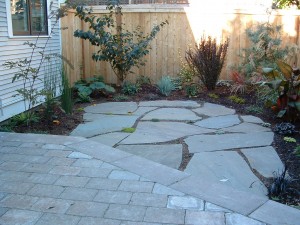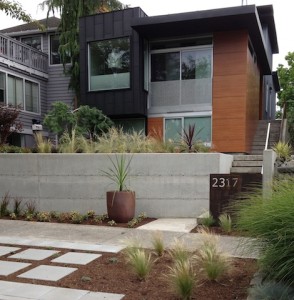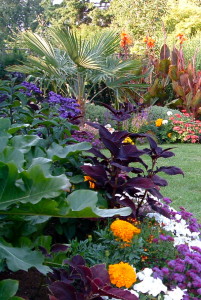If you’re not familiar with the term, hardscaping is a word used to describe any type of hard surface impressed upon the landscape, including patios, driveways, walkways and more.
When choosing a hardscape option, keep both the aesthetic and the practical in mind. Here are some examples:
Drainage:
Often, a portion of the area needs to be “permeable”, to control where and how run-off drains into the surrounding areas. Pavers and natural stone are considered permeable if they are not mortar set, while cement or aggregate are less so. If there are drainage issues, sand set natural stone or pavers may a good option. These materials allow moisture to drain through the spaces between them evenly without creating much run off.
If there are significant drainage, erosion or moisture problems on the site they should always be addressed before, or as part of, installing any landscape project.
Design and aesthetics:
What fits the space, the surrounding architectural effects and the overall setting? A Japanese garden may work with a traditional tudor, and professional designers can develop ways to merge themes that might otherwise seem incompatible. Considerations such as colors, the size and shape of the space, and most importantly, how it will be used.
Budget:
There are various price ranges associated with installing hardscapes. The extent of leveling that is needed, as well as the materials selected, are both significant factors. Pavers are often the most cost-effective, followed by some concrete and natural stone treatments, just to scratch the surface. It is best to get an idea of budget ranges during the design process.
Accessibility:
If the site is difficult to reach and supplies and equipment need to be moved by hand it may limit the options. Logistics require careful advance planning. While a cement truck may not be practical in a tight space, a smaller scale option, such as combining pavers, tile or natural stones and using bagged cement may be ideal solutions.
An experienced landscape designer has solved these issues many times: knowing what’s out there and how to make informed choices based on aesthetics, budget and logistics. I am available as a consultant to help you make those choices and also provide for implementation services.
Please contact me if you are not sure what hardscape best suits your needs.
Cordially,
Michael

A combination of natural stone and sand set pavers
provide a striking contrast. Greenlake, Seattle WA
 Mass planting — using just one variety of plant — is an effective garden design tool, with many applications. You can used mass plantings to:
Mass planting — using just one variety of plant — is an effective garden design tool, with many applications. You can used mass plantings to:




